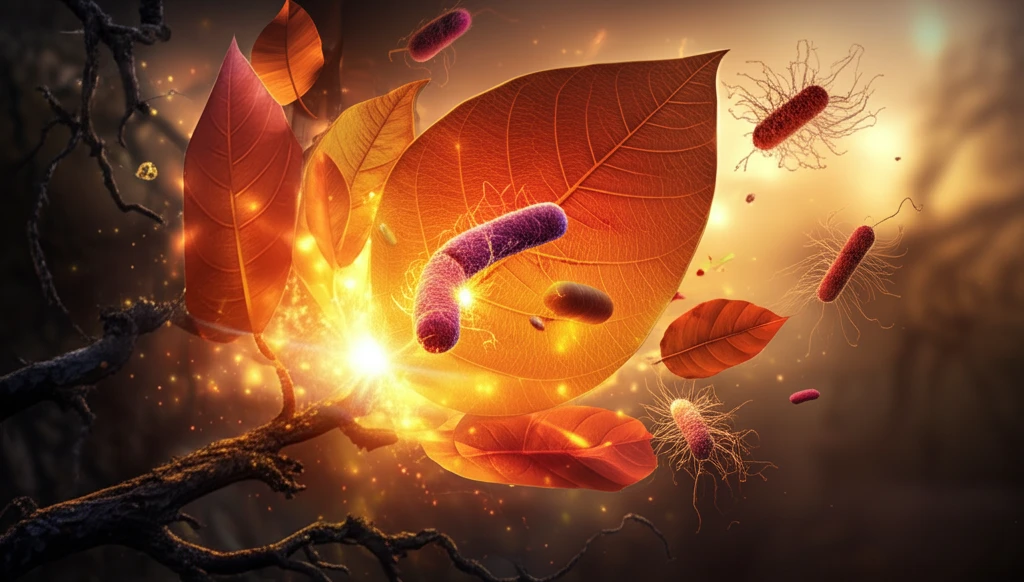
Unlocking Nature's Pharmacy: The Healing Power of Palash (Butea monosperma) Leaves
"Discover the hidden potential of Butea monosperma leaves: Phytochemical analysis reveals powerful antibacterial and antifungal properties, offering new avenues for natural health solutions."
For centuries, traditional medicine has harnessed the power of plants to heal and protect. In India, one such plant, Butea monosperma, also known as Palash or 'Flame of the Forest,' holds a revered place. While its vibrant flowers and other parts have been traditionally used, recent research is shedding light on the untapped potential of its leaves.
A groundbreaking study published in the Asian Journal of Chemistry delves into the phytochemical analysis of Butea monosperma leaves. This in-depth investigation uncovers the presence of potent compounds with significant antibacterial and antifungal activity, opening doors to new natural remedies.
This article explores these findings, making the science accessible and demonstrating how Palash leaves could offer a natural boost to your health and wellness. We'll uncover the specific compounds identified, how they work, and what this means for the future of natural medicine.
Decoding the Healing Power: Key Compounds in Palash Leaves

The study meticulously extracted and analyzed the saponifiable matter from the petroleum ether extract of Butea monosperma leaves. Saponification, a chemical process, separates fatty acids and other valuable compounds. This process led to the identification of four key compounds:
- Palmitic acid: A saturated fatty acid known for its emollient properties.
- Tetradecanoic acid: Another saturated fatty acid, also known as myristic acid.
- Oleic acid: A monounsaturated omega-9 fatty acid, known for its potential heart-healthy benefits.
- Alpha-linolenic acid: An essential omega-3 fatty acid with anti-inflammatory properties.
Palash: A Natural Ally for Health?
The research on Butea monosperma leaves provides a compelling scientific basis for its traditional uses. The discovery of antibacterial and antifungal activity in its key compounds highlights the plant's potential as a source of natural remedies. As we seek alternatives to conventional treatments and embrace holistic approaches to health, plants like Palash offer a promising path forward. Of course, more research is needed to fully understand the benefits and safety of using Butea monosperma leaves. However, this study serves as a powerful reminder of the untapped potential hidden within the natural world.
